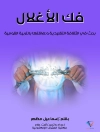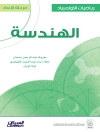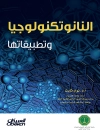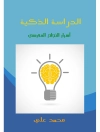Finnish pupils’ success in international student assessment tests is a hot topic everywhere in the world. The significance of Finnish educational policy and society are continuously discussed. This book provides explanations, answers and reflections to these questions. Over 30 expert authors have contributed to this book by bringing their own specific research-based viewpoints to these issues. The book describes the wholeness of the Finnish educational system, on both structural and administrative levels. It introduces the framing factors and societal conditions of education in Finland. It also explains how the Finnish educational system and teacher education function in everyday life. The book illustrates how teaching and learning of different subjects is realized in Finnish schools, and describes the essential characteristics and methods of teaching, learning materials and research on these issues. The book provides important insight and reflections to international researchers, teachers, students, journalists and policy makers, who are interested in teaching and learning in Finnish schools. It shows the results of the systematic and persistent work that has been done on education and schooling in Finland. The main features of education in Finland: – Strong equity policy – Teachers as autonomous and reflective academic experts – Flexible educational structures and local responsibility for curriculum development Evaluation for improvements, not for ranking – No national testing, no inspectorate – Research-based teacher education – Teachers’ high competence in content knowledge and pedagogy – Trust in education and teachers
Inhoudsopgave
Acknowledgements; Preface: Perspectives for the Future of the Teaching Profession; PART I INTRODUCTION: CURRENT EDUCATIONAL FRAMING FACTORS AND CONDITIONS IN FINLAND 1. Amazing PISA Results in Finnish Comprehensive Schools; 2. The Societal Factors Contributing to Education and Schooling in Finland; 3. Finnish Teachers as ‘Makers of the Many’: Balancing between Broad Pedagogical Freedom and Responsibility; 4. The Core of School Pedagogy: Finnish Teachers’ Views on the Educational Purposefulness of Their Teaching; PART II THE FOUNDATIONS: THE DESIGN OF EDUCATIONAL SYSTEM ON VARIOUS LEVELS 5. Striving for Educational Equity and Excellence: Evaluation and Assessment in Finnish Basic Education; 6. The Finnish National Core Curriculum: Structure and Development; 7. Research Orientation in a Teacher’s Work; PART III TEACHING AND LEARNING FOR LIFE: ACADEMIC SUBJECTS 8. Promoting Mathematical Thinking in Finnish Mathematics Education; 9. Science at Finnish Compulsory School; 10. Language and Literature Education: Principles and Reflections on Mother Tongue and Literature; 11. Language Education – Foreign Languages; 12. Religious Education in Finnish School System; 13. History, Social Science and Geography Education in Finnish Schools and Teacher Education; 14. Arts Education: Instruments of Expression and Communication; PART IV REFLECTIONS: FUTURE SCENARIONS AND INVESTMENTS FOR PATHWAYS OF SUCCESS 15. Drama Education in the Finnish School System: Past, Present and Future; 16. ICTs in a School’s Everyday Life; 17. Public Institutions as Learning Environments in Finland; 18. LUMA Science Education Centre: Joy of Science for All – Bringing Science, Math and Technology Together; Epilogue: How to Be Prepared to Face the Future?; Biographical notes.












